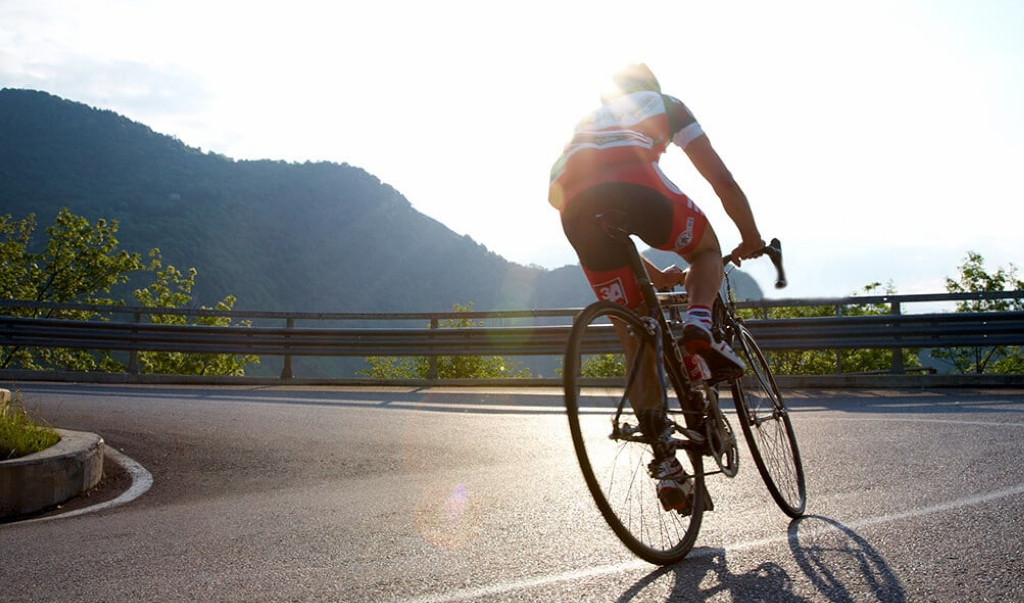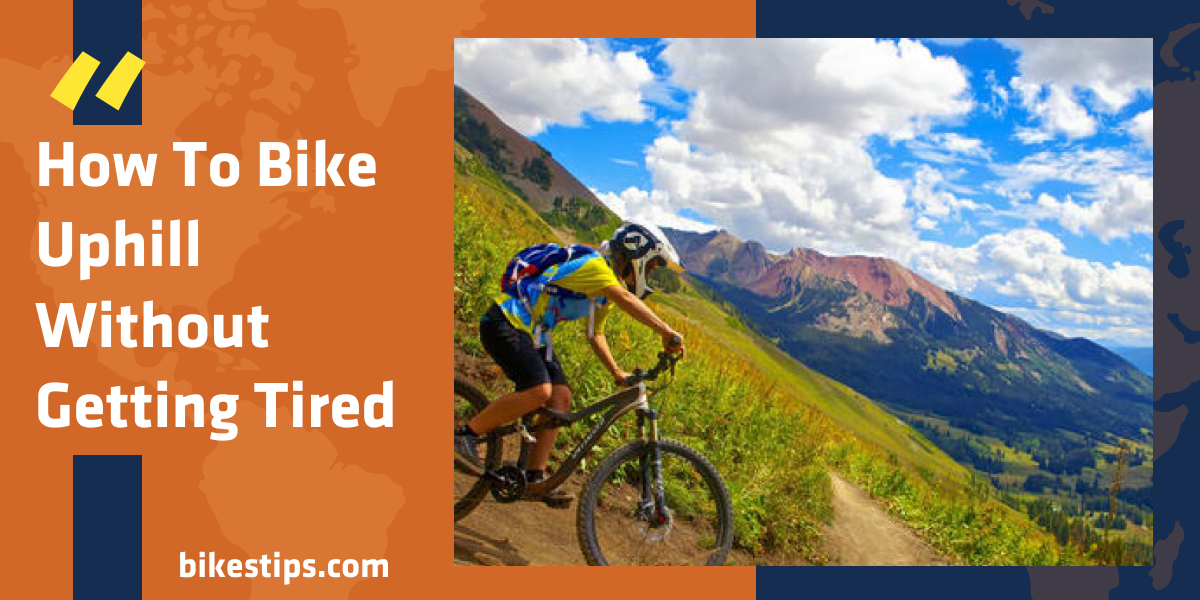Without the proper timing, attitude, and strategy, you may be a flying pair of lungs on a set of monstrous quadriceps and still slog over hills. These mental methods, along with clever techniques, allow mountain maestros to climb with elegance and comfort. Here’s how to cycle up hills for beginners and also tips on how to bike uphill without getting tired.
Tips On How To Bike Uphill Without Getting Tired
Hill climbing needs more than simply physical force. It’s also a talent that can be learned and practiced! If you wish to improve your climbing abilities and learn how to cycle up hills faster, check these tips for cycling uphill for starters. Here are some tips from our end:

Plan Beforehand
You could pedal up a brief, sharp hill differently than you would a long, moderate ascent. Rollers, or little rolling hills, need a different approach. So, if you anticipate what sort of slope is showing up, you can prepare your assault accordingly.
Begin With The Basics.
Gain up enough momentum before you reach the slope, if it’s feasible and secure to do it. Picking up acceleration prior to the climbing, can provide you with a moderate level of momentum which will assist you to climb up the slope while also saving your limbs!
Make The Most of Your Speed.
If possible and safe to do so, build up some speed before you get to the hill. Building up a little speed before the climb will give you some momentum to get you started up the ascent, and it will help save your legs!
Shift Fast
Although newer motorcycles can shift under greater stress than older bikes, you should still shift early. Before climbing, go to a lower gear for a seamless transition and an easier start working up.
Stand Upright
Climbing out from the seat might provide you with an edge in power whenever you need it. Standing up puts so much of your load on the pedals, allowing you to press down pretty hard, and this is also one of the best ways of how to bike uphill without getting tired.
Spin & Win It All
You may feel compelled to pound your path up the slope, but doing so will most certainly wear you out. You’ll exhaust your legs, deplete your fuel, and wind up feeling as if you’ve lost a lung along the way.
Pedal Across the Crest
Don’t apply brakes until you’ve reached the bottom! Just keep cycling up, past, and through the hill’s peak to ensure you reach the drop. Otherwise, your velocity will be lost when you decelerate towards the summit of the slope.
Consider Positive Thoughts
Instead, see yourself as lightweight and powerful, drifting to the summit. Some individuals see flowers, balloons, or doves hovering above them. Others like recalling loved ones who have influenced them.
Achieving Speed
Furthermore, if speed and agility are what you crave, then here are some of the tips on how to cycle up steep hills faster:
Paddle Faster
This would be the section that most individuals concentrate on how to bike uphill without getting tired, but you must be cautious not to concentrate on ascending enough that you lose your ability to grind effectively on the plains and rollers. Mountaineering training is a vast topic, but for riders who have also been training and undertaking climbing exercises, here are some tips to get the most out of your fitness.
Don’t Hustle
Several riders race to the base of the hill or a long climb, only to weaken significantly without reaching the peak. The idea is to pace yourself so that you have enough force for the last third of the climb since breaking towards the top will cost considerably more time than you could ever gain at the base. When riding in a team, you want to get beyond the top with some other cyclists so you can feed and work together during the descent.

Follow a Rhythm
Set an effort level, respiratory rate, and tempo that you can sustain, particularly on longer climbs. You’re cycling at an unsustainable rate if you’re panting excessively. When you’re nearing your maximal reliable energy, your respiration will be heavy and laborious, and you’ll be able to talk in short words.
Initiate The Hill Climb Staying Put On The Bike Seat
Grip the bars well over the top and near to the middle, keeping your pounds back. To allow optimum breathing, place your hands approximately 2-3 inches (5-7.5cm) from the middle stern. You will be able to breathe much more freely if the chest is wide and the shoulders are back.
Crouch Down While Moving Up The Hill
To maintain your breast open for easy respiration and your upper torso neutral, maintain your torso down and with elbows low yet slightly pointed outwards.
Stand Up From The Saddle While Moving Toward The Top of The Hill
At this point, utilize your whole-body weight to help you press down forcefully on the pedals. Standing requires a lot more effort than simply sitting, so don’t overdo it; save it for the latter part of the steep slope. Your hands should be atop of the cantilever brakes at this point.
Learn to Shift Gear While Going Uphill
Those gears are there to be employed, and if you shift them correctly uphill, they will undoubtedly aid you with more power. However, getting accustomed to how it feels to change gears as a technique of modifying the speed and power while climbing a hill takes time, so don’t give up; just keep trying. If shifting gears timely becomes your second nature you’ll know that you’ve learned how to bike uphill without getting tired.
Be On Low Gear With a Steep Hill
When you’re more comfortable with hill riding on a bicycle, understand how to climb a hill cheaply. This strategy necessitates that you remain seated and utilize low gear most of the time rather than standing up.
If you’re looking for some of the best bikes for going uphill, then you’re at the right place here.
I would suggest a “sport hybrid” bike with a slightly upright riding posture and low gears for climbing hills, as well as frame dropouts for mounting racks. Because of the slopes, I also suggest hydraulic disc brakes rather than cable discs for maximum stopping force and safety. What’s important here is that the bike has discs; if it has cable-actuated discs, it’s easy to replace the wire with hydraulic disc brakes for roughly $100 for a Shimano hydraulic brake kit, just make sure to match the diameter of the cassettes on the bike, e.g., 160mm discs. If you buy a bike without disc brakes, it’s probable that it won’t have the requisite frame dropouts to take disc brakes; retrofitting a non-disc version to adopt disc brakes is often prohibitively costly. Trek, Giant, Specialized, Kona, Marin and more brands provide a variety of options in this area.
What Gear to Use When Going Uphill on a Bike?
Use a smaller cycling gear for climbing hills. A lower gear is obtained by combining a smaller sprocket with a larger cassette gear. Switch to a upper bike gear while descending slopes. A higher bike gear is obtained by combining a larger chainring with a shorter sprocket gear.
Health Benefits
Furthermore, cycling uphill can help burn calories too. Here is a comprehensive analysis on biking uphill calories burned:
Mountain biking‘s natural slopes, inclines, and drops result in a more demanding exercise than a simple bike around town. A 150-pound individual may anticipate to lose 477 calories in 30 minutes of riding uphill, and a staggering 715 calories in 45 minutes. Of again, since the normal mountain bike experience involves coasting down slopes, your burn may differ.
Let’s Watch a Video Review!
How To Mountain Bike Uphill Without Getting Tired?
Weight is an important factor in climbing hills, although huge individuals can accomplish it as well. All you need to do is keep the weight-to-power ratio under control. You may begin by decreasing a load of your bike since the climb is nothing more than you and your bicycle fighting gravity and your own weight. Your optimal cadence may differ from that of another cyclist; however, 90rpm is considered the median. Track your cadence using a sensor, and keep in mind that the force you place your muscles through this is adjustable to your needs:
- Choose high resistance for short, strong efforts and low resistance for endurance.
- Align yourself with your elbows flexed and your back flat, reducing your center of mass and sustaining the necessary core muscular strength while controlling lactic acid buildup.
- Maintain your momentum, and you’ll be riding properly. If you take these bits of advice to your heart, you’ll successfully learn how to bike uphill without getting tired.
Should You Stand Up When Cycling Uphill?
It all comes down to the slope and duration of the climb. You don’t have to stand since the steeper the hill, the quicker you travel. When you sit, you are also more aerodynamic. If the slope is steep, standing will provide you a temporary edge.
Related Stories
Bikes Tips contains many informative articles about bikes and bike accessories from which you will acquire fantastic knowledge about bikes. You can see these articles to get proper instructions by clicking the attached links.
Topics | Links |
Best Electric Tricycle for Adults | |
Bicycle Helmet Laws by State | |
How To Fit A Bike Helmet For A Child | |
Are Hybrid Bikes Good for Trails? | |
Best Cycling Gloves for Hand Numbness | |
Best Tailgate Bike Pad |
FAQs About How To Bike Uphill Without Getting Tired
Conclusion
Cycling uphill is clearly simpler if you’re fitter and lugging less weight – weight, bike load, and baggage weight – but hills aren’t a significant problem for the ordinary cyclist provided you have low gears and practice utilizing them. Many riders want climbs, whether they are short and snappy hills or immensely lengthy mountain passes. They enjoy going upward. And, although there’s no denying that climbing is difficult, the question would be whether investing all of your time in the hills is truly harming your overall cyclability. However, if you want to learn how to bike uphill without getting tired, then be aware that many bikes’ gears do not go low enough for regular people to go up steep grades without suffering.
